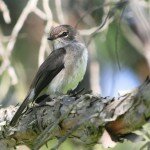Birding in Cape Town: Betty’s Bay Tern Roost
Betty’s Bay is just over an hours drive from Cape Town and offers a great opportunity to catch up with some of the Cape’s endemic bird species. What is particularly attractive about the area is the close proximity of the mountains to the coastline, which creates a good mix of fynbos, coastal, freshwater and forest habitats. You can cover the area quite easily in one morning, but if you want to find some of the trickier fynbos endemics (ie. Victorin’s Warbler) you’ll need a bit more time. I recently spent 5 days on holiday in the area and covered most of the good spots.

Map © Peter Slingsby: www.slingsbymaps.com
An area worth taking a look at is the gull and tern roost at the bottom of Waterfall road (road towards sea from Harold Porter Botanical Gardens).

The roost is best on a pushing tide as the birds tend to be a bit closer, but a scope can sort that out easily enough. Sandwich and Swift Terns are the commoner species one can expect, but Common Terns are also regular.

The area is also good for Crowned Cormorant, however these are probably best seen at Stony Point where they breed. White-breasted Cormorants and the odd Bank Cormorant also regularly pass by.

A star attraction at this site are the breeding African Black Oystercatchers. Each year a couple of pairs rear young along this stretch of beach. They aren’t difficult to find, the locals put a lot of energy into keeping walkers out of the breeding area with red danger tape!

Cape Siskin is one of the trickier Cape endemics to pin down, but if you know their nasal “siskiiiiin” call you’ll pick them up more frequently. The bird below was one of a pair actively feeding in the coast thicket close to the tern roost.

White-fronted Plovers are resident breeders along this stretch of coast; the young bird below, in its rather scruffy plumage, is a product of their most recent brood.





Dear All,
I am a french ornithologist (attaché to Paris museum) and having published a Monograph of the Finches (vol. 1). Please,see the cover of the book in Michel Finches on Flickr. I am now working on the vol. 2 with all the Serinus and allied. In this way, I would love to reproduce your interesting photo of a Cape Siskin female eating on conifer tree. Would you agree?
If you are interested, i propose you a pdf version of the vol. 1 (in 5 parts by mail) and of the vol. 2 when published (august 2010).
Kind regards
Michel Ottaviani
I really liked your blog.Much thanks again. Keep writing.